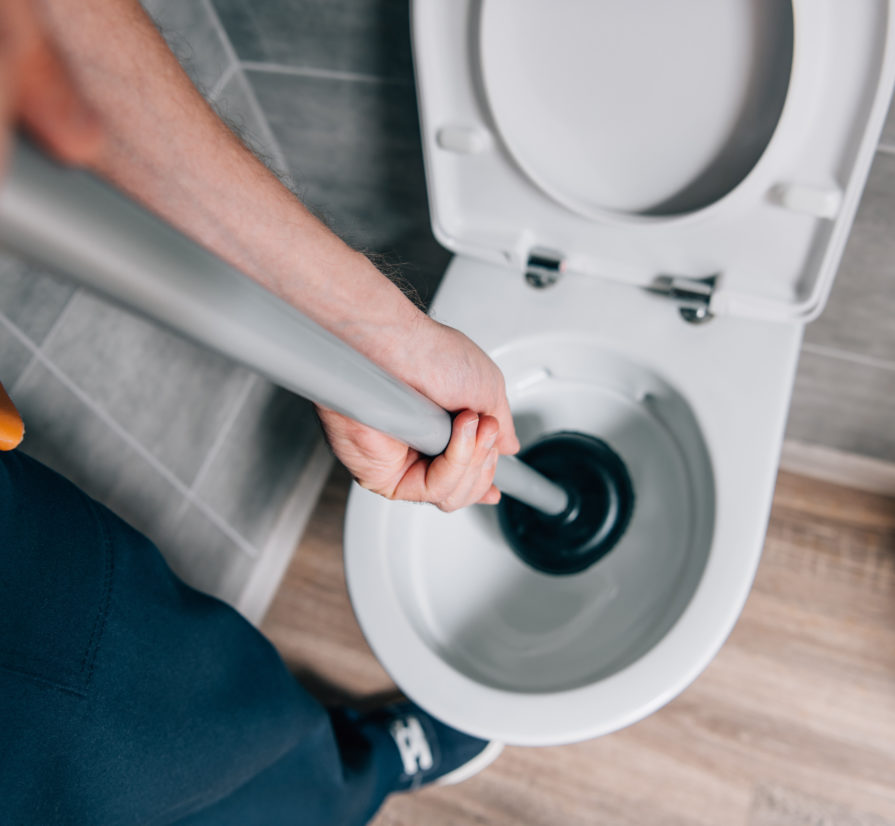
How many times have you experienced the horror of a clogged toilet? Watching the water slowly rise, threatening to spill over the bowl, is never a pleasant experience- and neither is using a plunger. It may seem self-explanatory, but there are proper techniques and types of plungers you should use when attempting to dislodge a clog. With these tips from the Mr. Plumber team, you’ll be plunging away like a pro in no time!
Plunger Technique
First, you should examine the state of your toilet. If it’s overflowing due to a clog, you should allow 5-10 minutes for it to drain on its own. Immediately scooping the water out on your own is not recommended, especially if it’s contaminated with human waste. It would be best if you also refrained from flushing your toilet in hopes it would go down. This will only exacerbate the problem.
- After waiting for the water level to go down, you should locate the water supply valve on the wall and turn it counterclockwise to turn it off.
- You can try scooping some of the water out if the bowl is too full. If there’s too little water in the bowl, add water until your toilet is halfway filled.
- You might think that having less water is better, but having an adequate amount allows for proper suction.
- Now, use your plunger. Make sure you select the best type for the toilet, which is a flange.
- Ensure the plunger is completely submerged by the water and directly covers the drain opening.
- Using the proper plunging technique, plunge your toilet for about 20-30 seconds. Use a push and pulling motion while doing quick, directed thrusts without breaking the seal.
If you’ve followed all the instructions correctly up until this point, your toilet should be unclogged. Congratulations! If not, there is no need to worry. It might mean you have to use something else, such as a drain snake. Or, it may be time for you to call your local plumbing services for some assistance!
Different Types of Plungers
The Cup
The cup is the traditional plunger that comes to mind for most people. They usually consist of a wooden handle and a rubber cup. These work best for sinks, bathtubs and shower drains.
The Flange
The flange is best suited for toilet clogs and is designed with them in mind. They look like the cup but with an added soft flap that unfolds at the end. We recommend using the flange for your toilet. If you fold the flap up, you could use it for your sink or other flat surfaces, but make sure to sanitize it properly before using it.
The Accordion
This plunger is reminiscent of the instrument it was named after and is a more efficient alternative to the flange. The hard plastic portion is shaped like an accordion, while the end has a soft cup that is meant to fit into the opening of your toilet bowl. They’re harder to learn how to use in comparison to other plungers but are very effective in doing their job once the proper technique is known.
Bathroom Plumbing Services In San Antonio
If you’re ever in need of expert plumbing services, Mr. Plumber is the company for you! We’re a team of friendly professionals who’ll be more than happy to help you out. Getting it done right, the first time – since 1977. Give us a call today for any questions or concerns about your needs.

